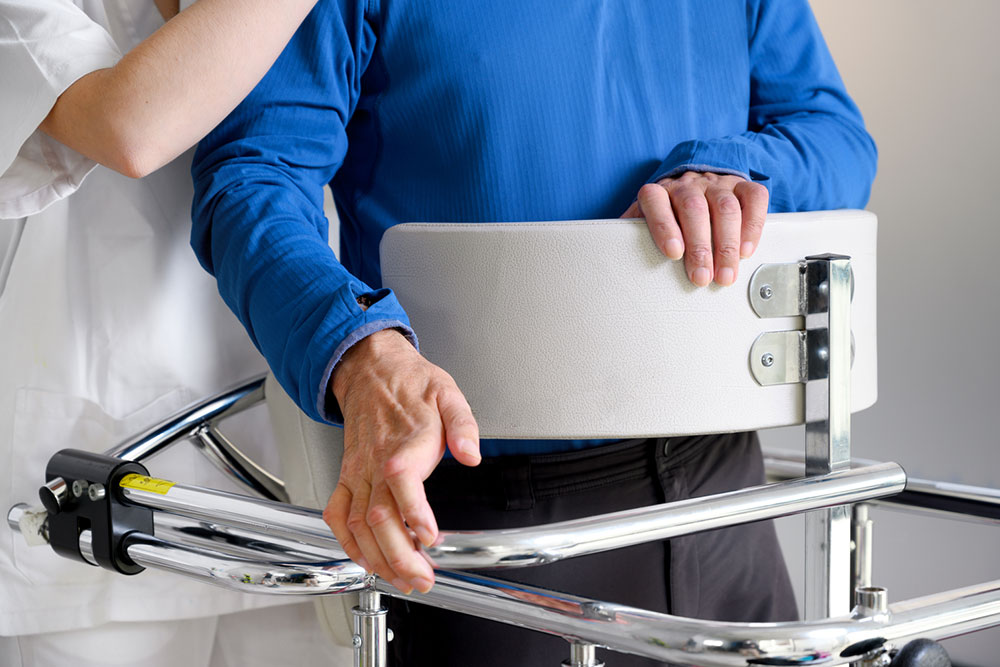8 telltale signs of amyotrophic lateral sclerosis

Amyotrophic lateral sclerosis (ALS), alternatively known as Lou Gehrig’s disease, is a severe neurodegenerative condition that affects the motor neurons in a person’s brain and spinal cord. While there is no cure for ALS, early diagnosis and intervention can significantly improve one’s quality of life and prognosis. Recognizing the warning signs of ALS is crucial for timely treatment. Keep reading to know the eight signs and symptoms associated with amyotrophic lateral sclerosis.
- Muscle weakness- One of the primary indicators of ALS is muscle weakness. As the disease progresses, those with ALS may notice a gradual loss of strength and coordination in their limbs. This weakness typically starts in the extremities, such as the hands and feet, and gradually spreads to other muscle groups. Everyday tasks like holding objects, walking, or even speaking may become increasingly difficult.
- Muscle twitching and cramping- Muscle twitching, also known as fasciculations, is a common early symptom of ALS. These involuntary muscle contractions can occur in various body parts, such as the arms, legs, or tongue. Although muscle twitches are common and usually harmless, persistent and widespread twitching, especially when combined with other symptoms, should be checked by a health expert.
- Difficulty in speaking and swallowing- As the condition progresses, it can affect the muscles responsible for speech and swallowing. Individuals may experience slurred speech, changes in voice tone, or difficulty forming words. Swallowing difficulties, known as dysphagia, can also occur, making it challenging to eat and drink safely. These symptoms can lead to malnutrition and a heightened risk of aspiration pneumonia, further emphasizing the importance of early diagnosis and intervention.
- Muscle atrophy- Muscle atrophy, or the gradual wasting away of muscle tissue, is a common sign of ALS. As motor neurons degenerate, the muscles they innervate start to shrink and weaken. It results in visible muscle loss, particularly in the arms and legs. Regular monitoring of muscle strength and size can help healthcare providers track disease progression.
- Cramped or weak hands- A specific sign to watch for is cramped or weak hands. Many ALS patients initially notice difficulty with fine motor skills, such as buttoning shirts or picking up small objects. This hand weakness can significantly impact daily activities, making it important to seek healthcare attention when such symptoms arise.
- Difficulty in breathing- As ALS progresses, respiratory muscles can become affected. It can lead to difficulty in breathing. Individuals may experience shortness of breath, labored breathing, or a weakened cough reflex.
- Changes in balance and gait- Those with ALS may find it increasingly hard to walk or maintain stability, increasing the risk of falls. This change in mobility can severely impact an individual’s independence and quality of life.
- Emotional and cognitive changes- While ALS primarily affects motor function, some people may also experience emotional and cognitive changes. These can include mood swings or difficulties with decision-making and memory.
While there is no cure for ALS, early treatment can help manage symptoms and improve one’s quality of life. It is worth noting that ALS is a complex disease with many symptoms, and not all individuals will experience the same signs or progression. Therefore, a comprehensive approach to care that addresses both the emotional and physical aspects of the disease is crucial for enhancing the well-being of those affected by ALS.







